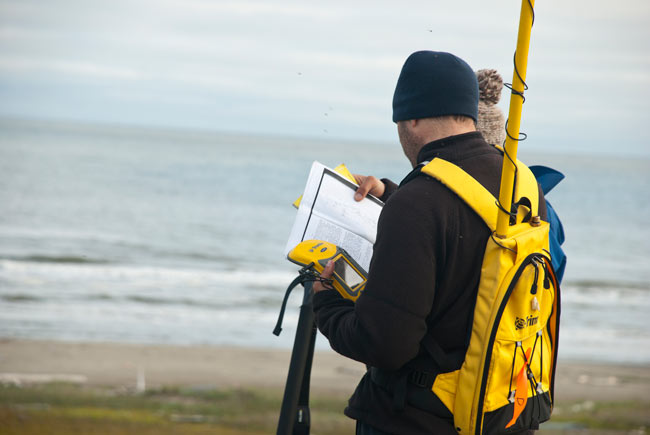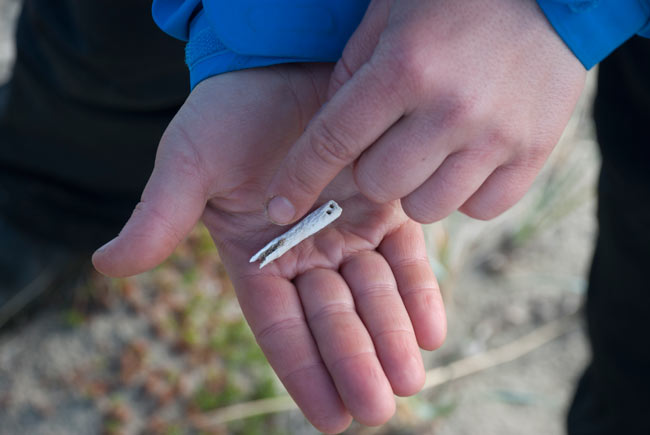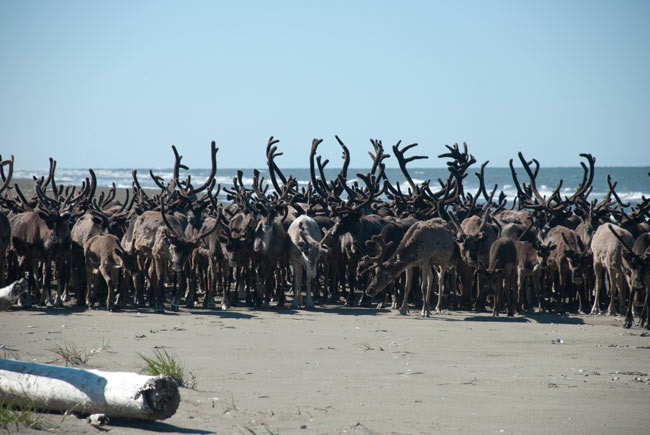As an SCA Multimedia and Graphic Design Intern for Bering Land Bridge National Preserve, I never could have hoped for the incredible experiences I've already had through my position - and I've only just started. My first trip into the backcountry was last month to a remote location just south of Ikpek Lagoon to take photos and learn about the preserve for our new publications and interpretive media I am working on.
The weather was cold, grey, wet, and windy when we were dropped off by bush plane at the archaeology camp where we would be staying overnight. Hoping to take advantage of my short amount of time out there, I spent the afternoon exploring the beach and grassy bluffs that led into the beautiful coastal tundra. That afternoon, I sighted my first whale, as well as several arctic ground squirrels, large flocks of common eiders, and a few red-throated loons, sandhill cranes, and Wilson's snipes.

After a frigid night of sleeping in a tent buffeted by sand and sea spray carried on the harsh wind, I awoke to find the sun beginning to shine, and the archaeology crew getting ready to head into the field for another day of surveying. We had gotten permission to interview them on their work out here, so I happily tagged along to take photos and learn about what they're doing.
The crew informed us that the sites they were surveying were anywhere from about 1,000 to several hundred years old. They showed us the remnants of old dwellings in which people had lived; they were fairly easy to identify by the denser vegetation growing in pits that were arranged in a very house-like pattern. The archaeologists pointed out what would have been the entry rooms, cooking and sleeping areas. They also showed us some of the artifacts that had been found, including a small bone blade attachment, a clay pottery shard tempered with bird feathers, and a huge whale mandible that looked to be about 8 feet long.

During the interviews we conducted, the archaeologists emphasized the importance of documenting their finds, especially because of the erosion occurring on the coastline that has already destroyed many of the sites on the beach. As these may represent an important link between our human ancestry and modern day cultures, they feel it is important to preserve the sites as much as possible. For this same reason, it is also vital that visitors to the area refrain from disturbing the sites and artifacts, as once the artifacts are removed from their original context, they lose the historical value that is key to preserving and understanding our past.
The day went by quickly but even when the bush plane arrived to pick us up on the beach, the excitement wasn't over yet. The pilot pointed out a dark mass shimmering on the horizon. "There's a big herd of reindeer coming this way," he said, rather nonchalantly. Sure enough, in the time it took us to load the plane, a herd of about 300 reindeer made its way up the beach to us. They slowed down as they got closer, wary of the plane but still wanting to pass by. We observed them silently, but eventually they turned and went back the way they had come, finally allowing us to take off.

Although Ikpek Lagoon is one of the lesser visited areas of BELA, it nonetheless has a lot to offer in terms of wildlife viewing, archaeological significance, and stunning landscapes. I feel so fortunate to have been able to visit this part of the preserve and experience not only the natural beauty of place, as well as its cultural history.
Bio
My name is Andrea Willingham and I am the SCA Multimedia and Graphic Design Intern for Bering Land Bridge National Preserve. Over the next 9 months, I will be creating the new visitor's guide and brochures for BELA, as well as helping manage the preserve's social media. Originally from Florida, I graduated from Eckerd College in 2012 with degrees in Environmental Studies and Anthropology, so coming to work at BELA has been an amazing opportunity to pursue both of these fields and contribute my work to the National Park Service.
|
August 02, 2012
|
Last updated: April 14, 2015
